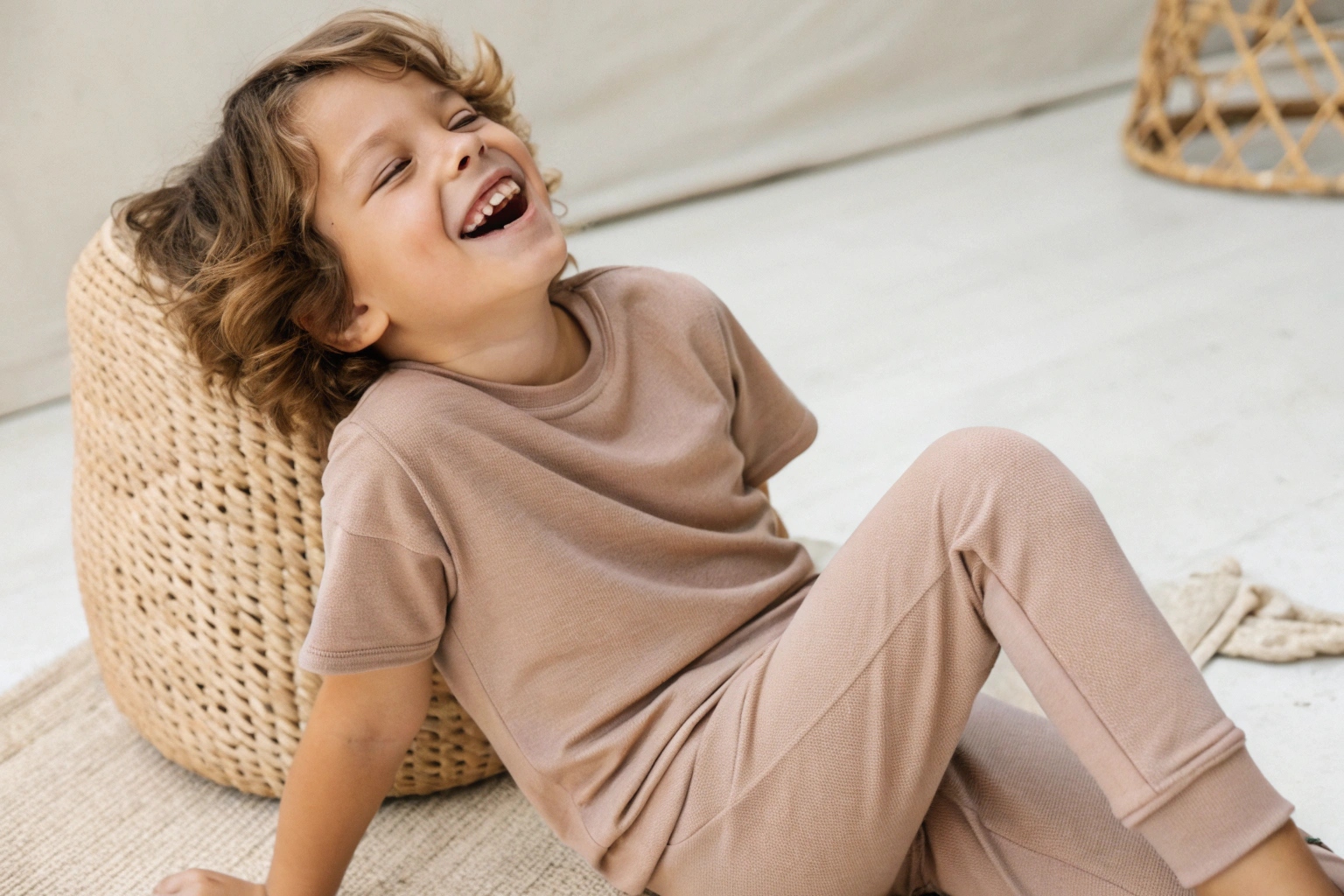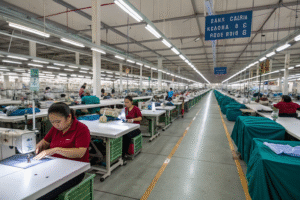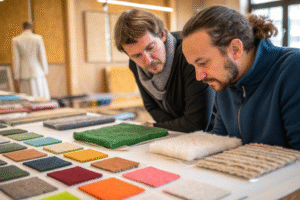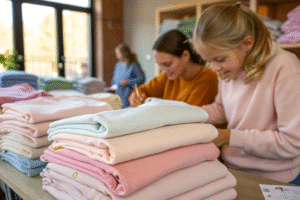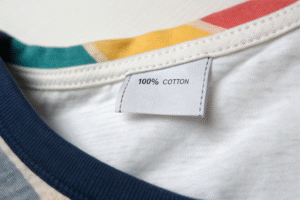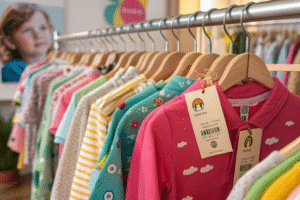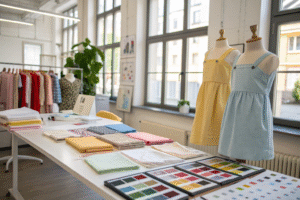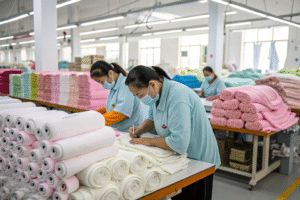When designing a capsule wardrobe for children, selecting the right fabrics is crucial. The fabrics you choose should be soft, durable, breathable, and easy to care for. Since kids are constantly on the move, their clothes need to withstand wear and tear while providing comfort. A well-thought-out fabric selection ensures that a child’s capsule wardrobe is functional, comfortable, and long-lasting.
Choosing the right fabrics for a children's capsule wardrobe is not only about style but also about providing a balance of comfort, durability, and ease of maintenance. In this article, we’ll explore the best fabrics for kids’ capsule wardrobes and why these materials are ideal for children’s clothing.
So, what fabrics work best for children’s capsule wardrobes? Let’s dive into it!
What Type of Fabric Is Suited for Children?
When selecting fabrics for children's clothing, it’s essential to choose materials that are soft, comfortable, and non-irritating to the skin. Kids often have sensitive skin, and certain fabrics can cause discomfort or allergic reactions. Additionally, the fabric needs to be durable enough to withstand frequent washing and active play.
The ideal fabrics for children’s capsule wardrobes are those that are breathable, easy to clean, and gentle on the skin. Here are some of the best fabrics to consider when designing a child’s capsule wardrobe:
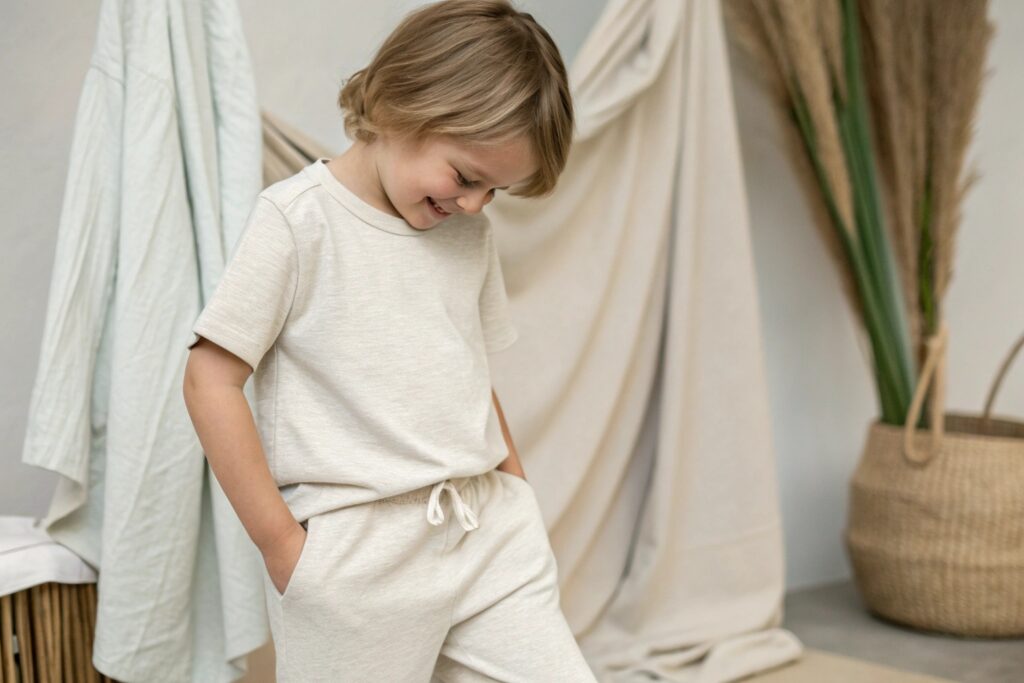
1. Cotton
Cotton is one of the most popular fabrics for children’s wear because it is soft, breathable, and gentle on sensitive skin. It is naturally hypoallergenic, making it a great choice for kids who may have allergies or skin sensitivities. Cotton is also versatile and can be used for various clothing items, including t-shirts, dresses, pants, and sleepwear.
Why cotton? It is lightweight, comfortable, and easy to care for. Cotton fabrics can withstand frequent washing, and they keep kids cool during warmer months while still providing warmth in cooler weather.
2. Organic Cotton
Organic cotton is grown without the use of harmful chemicals, pesticides, or synthetic fertilizers, making it an excellent choice for eco-conscious families. This fabric is equally soft and breathable as regular cotton but offers an environmentally friendly alternative.
Why organic cotton? It is safer for both the environment and your child’s skin, as it’s free from harmful chemicals. Organic cotton is just as durable as traditional cotton and is a great option for kids’ clothing that is sustainable and non-toxic.
3. Bamboo Fabric
Bamboo fabric is an increasingly popular choice for children's clothing because it is incredibly soft, breathable, and moisture-wicking. It is naturally antimicrobial, meaning it resists odors, making it perfect for active kids. Bamboo fabric is also biodegradable, adding to its appeal for eco-friendly families.
Why bamboo? Bamboo fabric is lightweight, cool to the touch, and perfect for both warm and cool weather. It is gentle on sensitive skin and offers a luxurious feel without being too heavy.
4. Jersey Knit
Jersey knit fabrics are soft, stretchy, and comfortable, making them perfect for kids who need clothes that allow for free movement. This fabric is made from cotton, rayon, or a blend of both, and it’s commonly used for t-shirts, leggings, dresses, and casual wear.
Why jersey knit? Its natural stretch makes it comfortable for active kids, and it holds up well after frequent washing. Jersey fabric also offers a smooth finish, reducing the chances of itching or irritation.
5. Denim
Denim is a durable fabric that is perfect for children’s pants, jackets, and skirts. It is strong, easy to care for, and can withstand frequent wear and tear. Although denim can be a bit stiff when new, it softens over time and becomes more comfortable with each wear.
Why denim? Denim is ideal for creating versatile, long-lasting pieces that can stand up to the active lifestyle of children. It’s perfect for making wardrobe staples like jeans, jackets, and overalls.
6. Fleece
Fleece is a soft, warm, and cozy fabric commonly used for outerwear, sweaters, and sweatshirts. It is lightweight yet provides great insulation, making it perfect for cooler weather. Fleece is also quick-drying and easy to care for, making it a popular choice for kids' winter clothing.
Why fleece? Fleece is comfortable, lightweight, and warm, offering excellent warmth without the heaviness of wool. It’s also highly durable and resistant to wear and tear, making it a great fabric for children’s outerwear.
7. Wool (for colder months)
Wool is a natural fiber that offers excellent insulation, making it perfect for winter clothing. Merino wool, in particular, is a soft and breathable option for children. It’s also moisture-wicking, so it keeps kids warm without making them feel sweaty.
Why wool? Wool is ideal for outer layers like sweaters, cardigans, and coats in colder climates. Its natural insulating properties make it a great option for keeping kids warm, but it’s important to choose softer varieties of wool to avoid itching.
How Do You Make a Kids Capsule Wardrobe?
Creating a kids’ capsule wardrobe involves selecting a limited number of high-quality, versatile pieces that can be mixed and matched to create various outfits. The key is to focus on functionality and comfort while ensuring the wardrobe is easy to maintain.
To make a kids' capsule wardrobe, start by choosing fabrics that are breathable, durable, and comfortable, and then select clothing items that can be paired in multiple ways. Here are some steps to help guide the process:
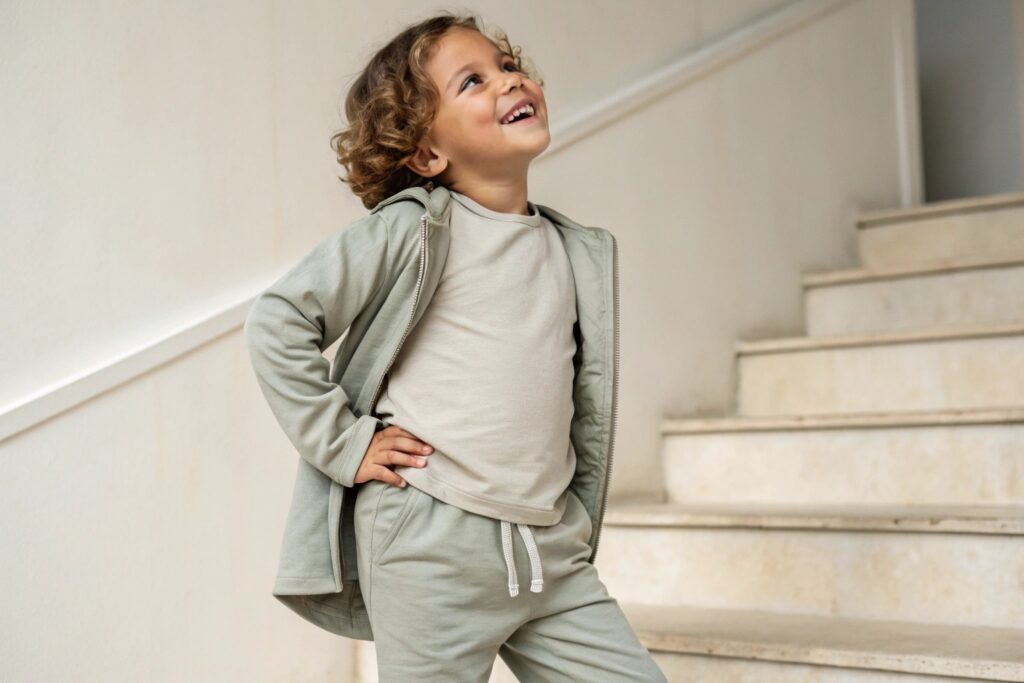
Step 1: Choose Core Colors
Pick a neutral color palette that can easily be mixed and matched. Colors like white, gray, navy, beige, and black work well as base colors. You can add a few accent colors like soft pastels or earthy tones for variety, but keep the palette simple to ensure all items complement each other.
Step 2: Select Timeless, Versatile Pieces
Focus on classic clothing items that can be worn for various occasions and seasons. These might include:
- T-shirts
- Sweaters
- Pants or leggings
- Dresses or skirts
- Outerwear (jackets or coats)
Choose items that can be layered for colder weather or worn alone during warmer months.
Step 3: Opt for Durable, Easy-to-Care-for Fabrics
Choose fabrics that are comfortable, durable, and easy to care for. Cotton, organic cotton, and bamboo are great choices for everyday wear, while fleece or wool can be added for warmth. Make sure the fabrics are easy to wash and hold up to frequent use.
Step 4: Add Practical Footwear and Accessories
Include versatile shoes like sneakers, boots, and sandals, as well as simple accessories like hats, scarves, or socks. Keep it minimal, focusing on quality and practicality.
Step 5: Adapt to the Season and Needs
Adapt the wardrobe to fit your child's specific needs and the season. For example, you may need to add heavier outerwear or extra layers for winter, while lighter fabrics like cotton or bamboo may be suitable for the warmer months.
Conclusion
When designing a children’s capsule wardrobe, choosing the right fabrics is essential to ensure comfort, durability, and ease of care. Cotton, organic cotton, bamboo, fleece, and wool are some of the best options for kids' clothing, offering versatility, comfort, and sustainability. By selecting fabrics that are both practical and stylish, you can create a capsule wardrobe that works for your child, simplifies your life, and supports a more sustainable fashion approach.

